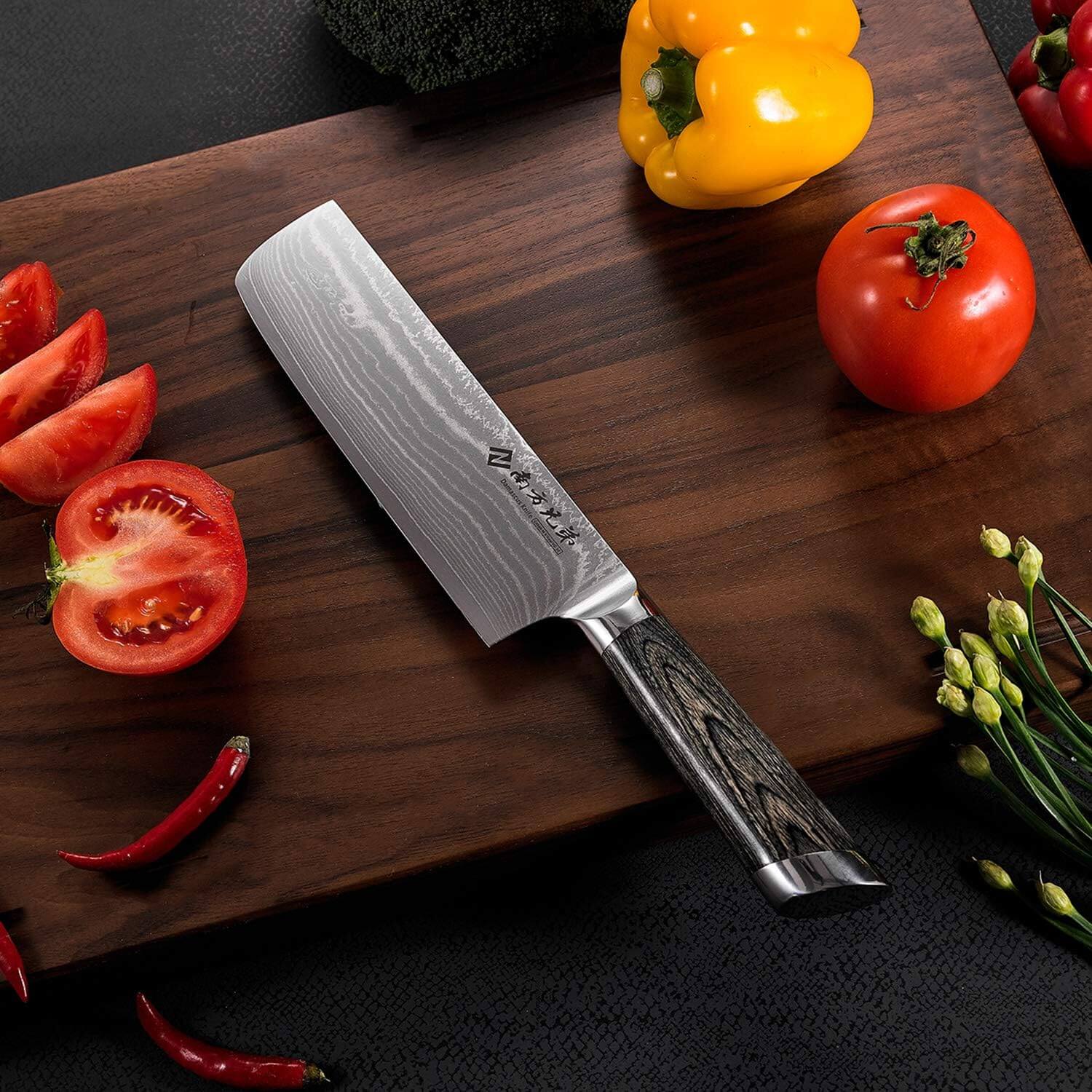The Nakiri knife holds a significant place in the realm of Japanese culinary tools, revered for its precision and efficiency in vegetable preparation. With a rich history spanning centuries, this knife embodies the traditional craftsmanship and cultural significance associated with Japanese cuisine.
In this micro-post, we will delve into the origins of the Nakiri knife, tracing its ancient roots, exploring its evolution, and highlighting its cultural importance.
Additionally, we will provide practical advice on choosing and caring for a Nakiri knife to ensure its longevity and optimal performance.
Ancient Roots of Vegetable Knives in Japan
The historical background of vegetable knives in Japan dates back to ancient times. Japanese cuisine has always placed a strong emphasis on fresh, seasonal ingredients, particularly vegetables. As a result, the need for specialized knives specifically tailored for vegetable preparation arose.
These knives were designed to handle delicate produce with precision and finesse, allowing chefs to showcase the natural flavors and textures of vegetables in their dishes.
Early knife designs were characterized by a straight, rectangular shape, which facilitated the chopping and slicing of vegetables. The flat edge of the blade enabled smooth, clean cuts, minimizing damage to the delicate cell structures of the vegetables. This design approach distinguished vegetable knives from other types of knives commonly used in Japanese cuisine.
Evolution of the Nakiri Knife
Over time, the Nakiri knife underwent a process of development and refinement to meet the specific needs of Japanese vegetable-centric cuisine.
The rectangular shape of early vegetable knives gradually evolved into the square-tipped, thin-bladed design that characterizes the Nakiri knife today. This modification allowed for more precise control and enhanced maneuverability when slicing and dicing vegetables.
The blade of the Nakiri knife is typically double-edged, providing versatility and ease of use for both right-handed and left-handed individuals. The thinness of the blade reduces resistance, making it effortless to make precise cuts through vegetables.
The flat edge and squared-off tip make it ideal for chopping and push-cutting techniques, commonly employed in Japanese vegetable preparation.
Traditional Techniques and Artistry
Crafting a Nakiri knife is a labor of love that requires meticulous attention to detail and traditional techniques passed down through generations.
Skilled artisans meticulously forge the blades using high-quality carbon steel or stainless steel, which is then hand-ground and honed to a razor-sharp edge. The intricate process of heat treatment ensures the blade's durability and resilience.
The handle of the Nakiri knife, known as the hilt, is often made from various materials such as wood, horn, or synthetic materials. These handles are carefully shaped and attached to the blade, ensuring a comfortable grip and ergonomic balance during use.
The combination of expert blade craftsmanship and carefully selected hilt materials results in a knife that not only performs exceptionally but also exudes aesthetic beauty.
Cultural Significance
The Nakiri knife holds a deep cultural significance in Japanese culinary traditions. It is an embodiment of the respect for seasonal produce and the artistry of vegetable preparation.
Japanese cuisine places great importance on harmonizing flavors, textures, and colors, and the Nakiri knife plays a vital role in achieving this balance.
The Nakiri knife is closely associated with traditional cooking techniques such as the meticulous julienne cuts, fine brunoise, and intricate vegetable carvings. It enables chefs to showcase the natural beauty and textures of vegetables, highlighting the uniqueness of each ingredient.
Moreover, the knife's precision and efficiency allow for minimal wastage, reflecting the Japanese value of resourcefulness and respect for food.
Choosing and Caring for a Nakiri Knife
When selecting a Nakiri knife, personal preferences and needs should guide the decision-making process. Consider factors such as blade material, handle design, weight, and balance.
High-quality carbon steel blades offer exceptional sharpness and edge retention, but they require regular maintenance to prevent rust. Stainless steel blades provide ease of maintenance but may require more frequent sharpening.
To ensure the longevity of a Nakiri knife, proper care and maintenance are essential. After each use, the knife should be washed and dried thoroughly to prevent corrosion.
Regular sharpening using a sharpening stone or honing rod will help maintain the knife's edge. Proper storage in a knife block or protective sheath will protect the blade from damage and maintain its sharpness over time.
Immerse yourself in our micro-post highlighting the advantages and distinctive features of the Nakiri knife if you seek further reasons to choose this exceptional tool. Discover compelling insights that will solidify your decision and enhance your understanding of why the Nakiri knife is a must-have in any kitchen.
The Nakiri knife stands as a testament to the rich history and significance of Japanese culinary traditions. Its evolution over time, from the rectangular vegetable knives of ancient Japan to the refined and precise Nakiri knife we know today, exemplifies the dedication to craftsmanship and the pursuit of excellence.
With its cultural significance, the Nakiri knife continues to be an essential tool for vegetable preparation, enabling chefs to elevate the flavors and aesthetics of Japanese cuisine.
By choosing and caring for a Nakiri knife with diligence and respect, one can embrace this culinary gem and unlock its full potential in the art of vegetable-centric cooking.
If you are interested in discovering recommendations for the top 5 Nakiri knives, I suggest checking out an article dedicated to the best Nakiri knives. By accessing this resource, you can begin your journey of experiencing the rich cultural heritage of Japanese cuisine in the comfort of your own home.



